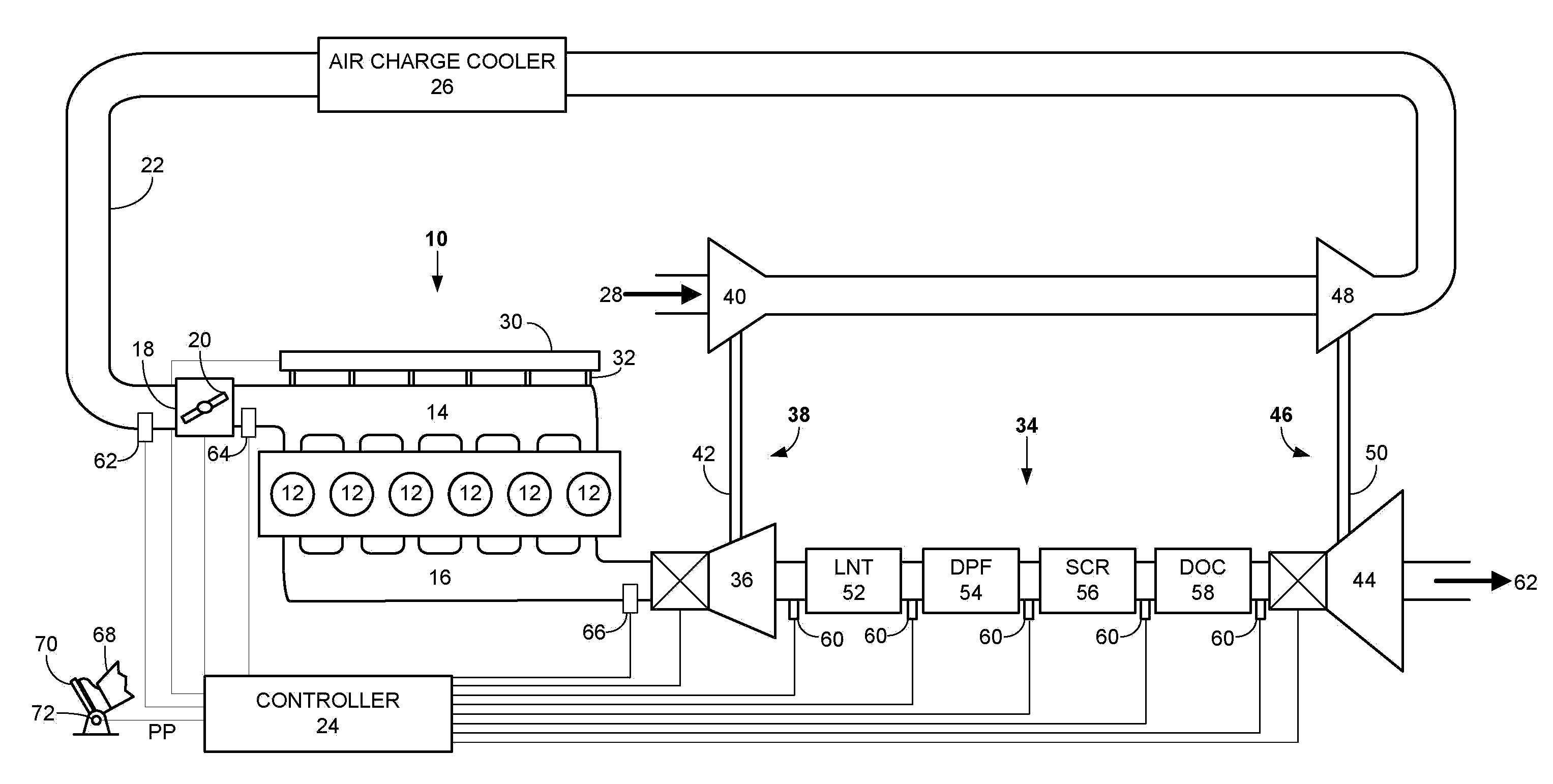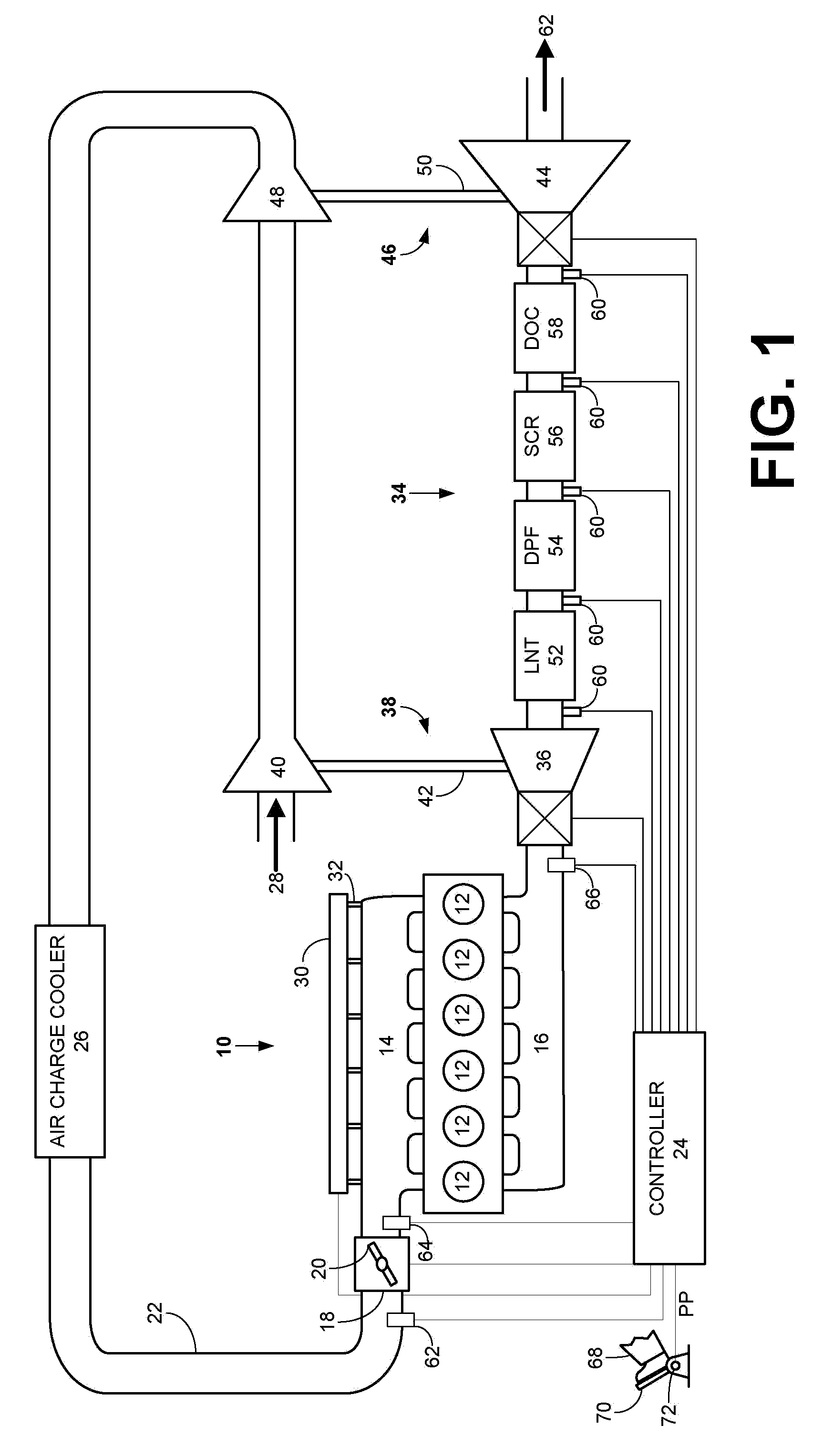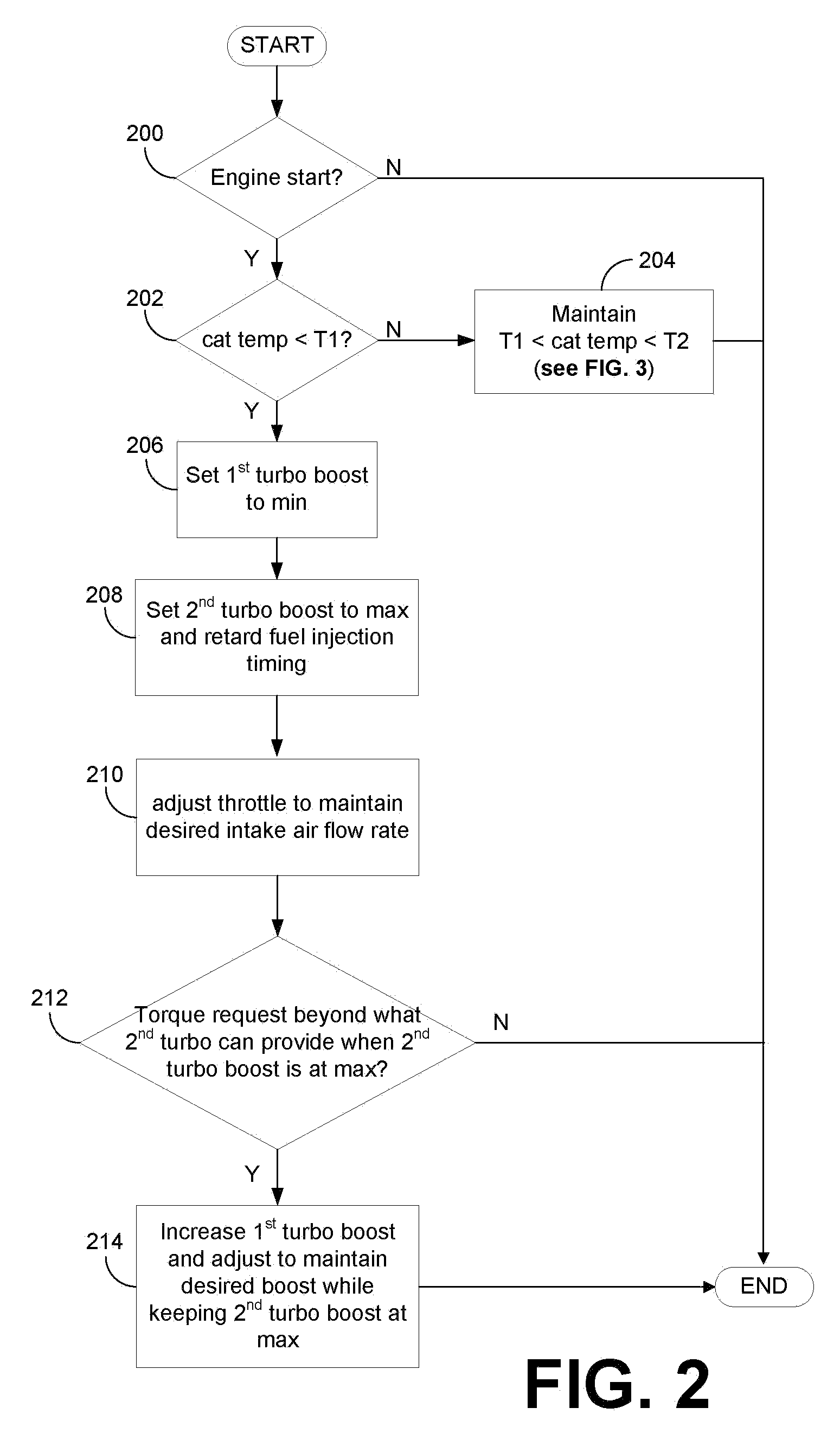Twin turbo diesel aftertreatment system
a diesel exhaust and aftertreatment technology, applied in the direction of machines/engines, mechanical equipment, electric control, etc., can solve the problems of increasing the nox conversion efficiency typically lost, the exhaust temperature may be lower, and the difficulty in controlling, so as to improve fuel economy. the effect of improving the nox conversion efficiency, reducing the component size and precious metal loading of the aftertreatment devi
- Summary
- Abstract
- Description
- Claims
- Application Information
AI Technical Summary
Benefits of technology
Problems solved by technology
Method used
Image
Examples
Embodiment Construction
[0011]The following description relates to one or more emission control devices placed between two turbocharger exhaust turbines (e.g., one upstream and one downstream) and coupled to a combustion engine as shown in FIG. 1. In such a system, the exhaust temperatures may be coordinating control of various engine parameters, such as an intake air throttle, fuel injection timing, with various exhaust parameters, such as exhaust pressure. The exhaust pressure may be controlled by coordinating operation of the turbines in various operating modes, such as adjusting turbine operation via the variable geometry blade when the turbines are variable geometry turbochargers (VGT). Alternatively, in other examples, adjustment of turbine operation may include adjusting turbocharger wastegate valves, variable nozzles, etc. By adjusting the operation of the turbines among the various modes, the amount of expansion of the exhaust gas via the turbines may be controlled. Increasing the expansion across...
PUM
 Login to View More
Login to View More Abstract
Description
Claims
Application Information
 Login to View More
Login to View More - R&D
- Intellectual Property
- Life Sciences
- Materials
- Tech Scout
- Unparalleled Data Quality
- Higher Quality Content
- 60% Fewer Hallucinations
Browse by: Latest US Patents, China's latest patents, Technical Efficacy Thesaurus, Application Domain, Technology Topic, Popular Technical Reports.
© 2025 PatSnap. All rights reserved.Legal|Privacy policy|Modern Slavery Act Transparency Statement|Sitemap|About US| Contact US: help@patsnap.com



